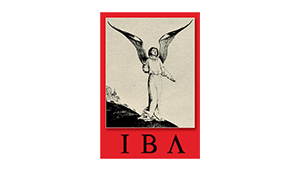From the Naxos Blog: Cherry Christmas
December 18, 2020
One Christmas carol that has always been on my list of favourites is the Cherry Tree Carol. Apart from the attractive melody, the words give a glimpse of the real human relationship between Joseph and Mary, the former harbouring a touch of tetchiness over the miracle of her immaculate conception. As the couple make their celebrated journey, with Mary heavily pregnant, they come across a cherry tree. Mary asks Joseph to gather some of the fruit for her, but he responds with a tart expectation that the tree will oblige with a second miraculous intervention and present the cherries to Mary by itself, lowering the boughs for her. In fact, it then does so! and Mary takes her pick before continuing on the journey “all with her heavy load.”
Here’s the carol in a version that uses the traditional melody. It’s in an arrangement for orchestra and choir by Roderick Elms. The constant shifts in pitch and key for individual lines of the melody suggest to me the slightly rocky mood swings between our two protagonists. What do you think?
Bob Chilcott (b. 1955) took the same narrative but set it to his own music as part of his 8-carol cycle On Christmas Night, written in 2010 for the choir of the University Christian Church in Austin, Texas. The composer explains that “the idea was to write a set of pieces that outlined the Christmas story and, in the original performance, the movements were interspersed with appropriate readings. In this piece I have [combined] new settings alongside traditional carol melodies.” Here’s his new take on the Cherry Tree Carol.
Now, just how many ships were seen “come sailing in on Christmas Day in the morning”? Two? Three? And where was the narrator seated? Under a holly tree? Or was it a sycamore tree? All of the above appear in the various settings of the carol texts. I’ve chosen a couple for you to compare and contrast. The first is one of the many folk melody arrangements by Imogen Holst (1907–1984), daughter of Gustav Holst, who enjoyed a successful career as a composer and conductor. She taught and travelled extensively before taking up the directorship of music at Dartington Hall, later becoming an invaluable assistant to Benjamin Britten shortly after he founded the Aldeburgh Festival, and subsequently becoming its artistic director.
As I sat under a holly tree is a cheerful unaccompanied carol for upper voices relating the arrival of Mary and Joseph in Bethlehem. Holst takes this simple strophic song and colours each verse to match the details of the text—her addition of ringing bells in the final verse is particularly effective and a fittingly joyful conclusion.
Peter Warlock (1894–1930) realised that same scene, but from under a sycamore tree, and with three ships, not two. A miniaturist now best remembered for his distinctive songs, Warlock was an enigmatic composer who pursued a reckless life and death (by suicide) in London’s Bohemia. In mid-1923 he responded to a request from Vaughan Williams for three carols with soprano solo, chorus and orchestra for a concert that December. As I sat under a sycamore tree is the final carol in the set.
Next, we have ancient and modern takes on those two seasonally celebrated plants—the holly and the ivy. The religious symbolism of the holly and the ivy in terms of Christianity has been much discussed but the emblematic use of these images extends back to Druidic and Roman times. The popularity of decorating households with holly for Christmas goes back several centuries. The words of the carol are however rich with mystical, poetic, and religious connotations, referring to the birth, crucifixion and resurrection of Jesus.
John Rutter’s (b. 1945) setting of The Holly and the Ivy is one of his many characteristic settings of traditional Christmas carols. It’s arranged for piano and upper voices.
In contrast, here’s an original setting of the words by Stuart Thompson for mixed choir and organ. It won The Times carol competition in 2011 and this elegant performance by the Elora Singers clearly demonstrates why it came out on top.
We end with two versions of the traditional Christmas Tree, or Tannenbaum in German. Composer/arranger/pianist/conductor Peter Breiner (b. 1957) has numerous acclaimed albums listed in the Naxos catalogue. On one, he takes this noted melody and presents it in Baroque clothes, in the style of an orchestral suite, mixing stately grandeur with complex counterpoint, and proving that you can’t keep a good tune down, no matter how you dress it up!
We end with a less staid arrangement of the tune for unaccompanied vocal quartet. Listen out for the nightingale! Or is it an early cuckoo…?





































